After the End of the Law
Paweł Pawlikowski’s Ida (2013)
Vol. 50 (February 2015) by Emilia Sieczka and Radoslaw Szymanski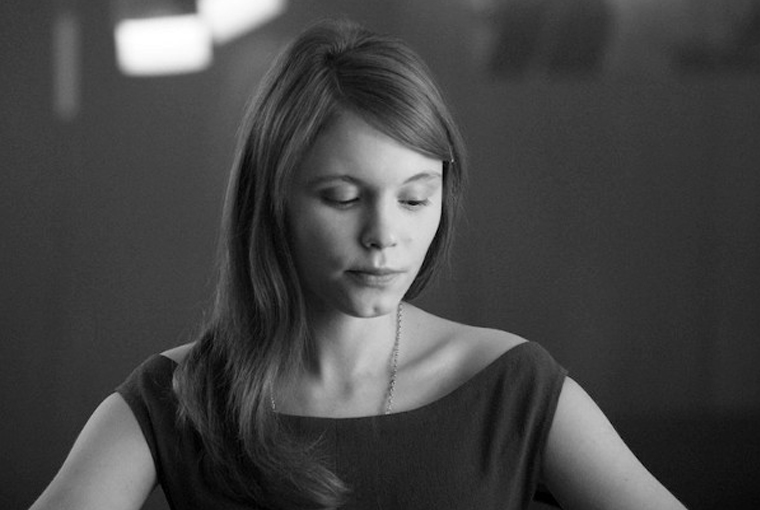
For Christ is the end of the law for righteousness to every one that believeth. (Romans 10:4)
POLAND, YEAR ZERO
The motives of sainthood, law and desire are taken up by Pawlikowski in a way which makes them at times imperceptible, which displaces the surface of the film away from them so to return to them all the more forcefully. The concise storyline of Ida, an apparent coming-of-age story set against a half-dreary, half-sentimental background, is nothing but a mere pretext for the juxtaposition of the two main characters – the curt aunt who endured the subjection to the brutal reality of war-torn Poland and the innocent Ida, hitherto living in perfect isolation behind the walls of a monastery. Anna, a young novice (played by Agata Trzebuchowska) is ordered by her Mother Superior to take a break from the monastic life before she can take her vows and visit her aunt Wanda (Agata Kulesza), her only remaining relative. Wanda makes her aware of her Jewish background, as well as her real name – Ida – and takes her looking for the graves of her murdered parents. Wanda, as we come to know through oblique references scattered throughout the film, survived the Holocaust to become a state prosecutor for the Communist regime in the after-war period.
The two main characters, however innocuous they might seem to the foreign audience, have both stirred a lot of emotions in Poland, each of them in a different way. The depiction of Wanda at times approaches dangerously a stereotype of a vengeful, anti-polish Jew who participates in (or, as the more extreme and conspiracy theory-like version of it would have it – creates) the repressive apparatus of the totalitarian Communist regime in order to seek retribution, with little regard for the class struggle or social justice. On the other hand, some commentators perceived Ida – an ethnic-Jew-turned-Catholic-nun – as a rather treacherous lens through which the director invites the audience to look at the Holocaust; thoroughly Polonized and Christanized, deprived of its specifically Jewish context.
Curiously, the key to the psychological portraits of both characters is conspicuously absent from the film. The perfect incompleteness of the successive shots which remain strikingly measured and well-composed even when, or perhaps especially when they willfully and deliberately miss an odd limb or head, mirrors the fact that the storyline revolves precisely around that which is itself never shown, not even as a brief retrospection – the Holocaust. In Ida the peculiarity of the plight of the Jews under the Nazi regime is depicted with unnerving acuity without as much as a single frame of direct representation.
THE TIME IS OUT OF JOINT – POSTMODERN READING OF
In his film Pawlikowski treats the historical background in a starkly expedient manner, by flattening it down, distilling it to a nearly abstract atemporal and atopic space. The rural Poland of the early sixties is depicted in a way which escapes the distinction between accurate and inaccurate – as if the director had attempted to reconstruct it not from the archive materials and actual memories, but from the films of the Polish Film School, the often fanciful cinematic reflection of the Polish sixties on itself. It is indeed a film made of films. Against such a backdrop the two main characters develop a relation whose complex dynamics seem to overwhelm the film and dominate over its political and moral dimension. However, if the spectator were to follow the director’s lead and allow this feigned occlusion, he would find the film incomplete and banal, perhaps even unintelligible. This ostentatious marginalization of the Holocaust, far from being accidental, seems to be a conscious and deliberate, necessarily subversive strategy of its depiction. The spectator is pushed to experience its absence and to rebel against it, by returning the neglected Holocaust to its central position on his own.
The friction between the presence and the absence; the explicit exclusion and the implicit inclusion; the reality of the resistance that the film puts up against the depiction of the Holocaust and the ideality of the reception of the film which performs its restitution in the mind of the spectator amount to a strong stance in the grand debate on the cultural and historical significance of the Holocaust. Pawlikowski’s measured post-modernism in the treatment of history is neither frivolous, nor arbitrary, as it often is, but rather identifies very precisely the way in which the events of the Second World War have constituted the post-war reality. The Holocaust, the nadir of modernity, the extreme fulfillment of its darkest potential, ushered in the times that keep on defining themselves negatively as “post-Holcaust”, where the world, faced with the impossibility of righting the wrongs, cannot help but to carry on despite its looming, has a taciturn presence. Although the world should have frozen up in an unending moment of silence for the victims and the demise of civilization, it has resumed shamefully and illicitly; not only in its day-to-day business, but also in its art.
Since everything that happened afterwards, happened illegitimately, at least in the moral sense, Pawlikowski’s decision to refrain from realism and to craft instead a synthetic microcosm which treats historical and geographical particularities but instrumentally, is in fact dictated by a pervasive logic. The postmodern aesthetic applied to the Holocaust is met with accusations of de-politicization and de-historicization of its subject matter. Yet this line of criticism misses the point entirely, since the absence of politics and history in the film is not specific to the way in which the director depicts the post-war reality, but to the post-Holocaust reality itself in its political and historical relationship to the Holocaust. At the same time, the deliberately deployed post-modernism constitutes a conscious strategy, allowing the paradoxical restitution of these themes. The film is meant to implode due to being starkly incomplete, and this “failure” is the measure of its success. What continues to be overlooked in the debate surrounding the film is the way in which the political and historical problems are allowed to resurge and, consequently, that underneath the psychodrama unfolding between the main characters, it deals with the catastrophic failure of the quest for a social order which would be both democratic and immanent; a problem which is at the same time thoroughly political in nature and intimately linked with the Holocaust.
IMPLOSION OF RELIGION – IDA AND MOTHER JOAN OF ANGELS
From an aesthetic standpoint Pawlikowski’s film draws from the achievements of the Polish Film School (1955 – 1963) – an artistic movement standing in direct opposition to socialist realism and comprising masterpieces such as Wajda’s Ashes and Diamonds or Polanski’s Knife in the Water. This broader context notwithstanding, one film of that movement clearly stands out as a much more direct, more revealing inspiration – Mother Joan of the Angels by Jerzy Kawalerowicz, a picture which won the Jury Prize at the Cannes International Film Festival in 1961. Set in an austere monastery cut away from the world, the film reflects on the ambivalence of sainthood in a way which resonates with and permeates, even if in an indirect fashion, Pawlikowski’s masterpiece.
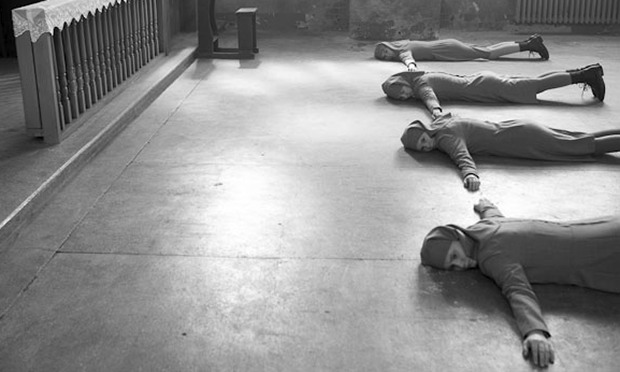
Agata Trzebuchowska in Ida
In the 1961 classic (based on a short story by a renowned novelist Jaroslaw Iwaszkiewicz) Mother Joan, the most devout nun, is considered to be possessed by the devil. Soon, the whole convent becomes an object of exorcisms performed by the young priest. In the course of his actions he finds himself helplessly empathic to Joan and eventually falls madly in love with her. What makes the case of Joan truly troubling is not the possession itself, but rather the fact that she incarnates the demoniac being that is indistinguishable from the angelic.
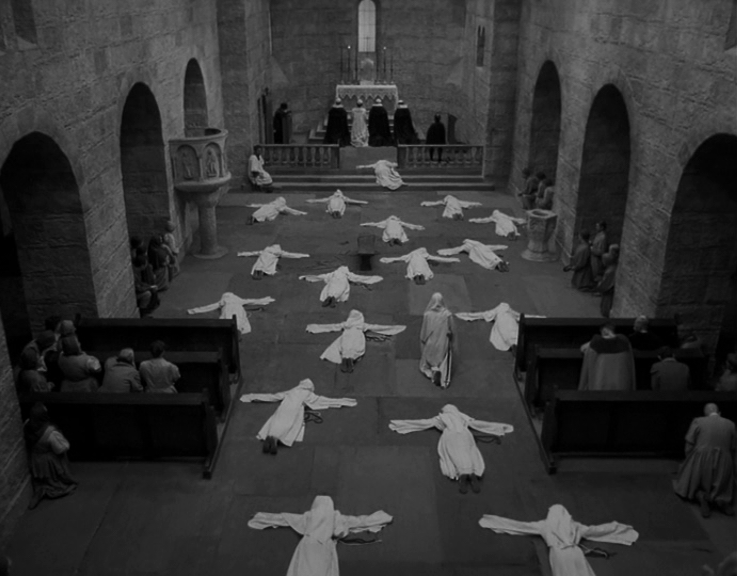
Jerzy Kawalerowicz’ Mother Joan of Angels
The point where self-denial meets self-glorification, as in the case of Joan, whose choice of damnation over salvation is predicated on the very same premise that had led her to former piety, is a point that defines what Lacan called ‘pure desire’. In an 1962 essay “Kant avec Sade”1 Lacan explored the idea of an affinity between the two thinkers in a surprising way. Contrarily to what one might expect, it is not a retrospective psychoanalysis of Kant performed with the tools crafted from Sade’s literary repertoire, but rather an attempt to discover a markedly Kantian tendency within Sade’s paradoxical philosophy.
The essence of Kant’s moral theory is the distinction between autonomy and heteronomy, literally “self-legislation” and its opposite – moral excellence consisting in finding and following the former and ridding oneself of all instances of the latter. According to Kant, autonomous moral law is different from a whimsical dictate of passions insofar as it is the only one devoid of all contingency; the only one which does not consist in a simple economy of urges and utilities and can elevate a person to the truly ethical. Once we see that it is the absolute formality of the injunction and not its relation to any actual impulses, situations and persons (in other words, its content) that is the defining characteristic of the theory of moral autonomy, the Kantian duty and Sade’s impassioned cruelty appear much closer to each other, echoing the indistinctness between the absolute immersion in one’s duty – the quest for sainthood – and the demoniac possession in the film.
In a striking scene where the priest seeks advice from a rabbi, his identical counterpart, for a brief moment the entire premise of the film is called into question. “What if”, asks the rabbi, “Mother Joan is not possessed at all, but she is simply abandoned by the angels?” Maybe there is no external evil to blame for the fall of Joan after all, but it is rather the case that she, her sainthood and her pure duty are fundamentally unsustainable, doomed to collapse once they are no longer propped up by grace. The Kantian-Sadean project of achieving the absolute self-sufficiency and moral autonomy, already compromised by the apparent undecidability between the loftiest and the basest interests it nests, is here revealed to be more than that. Impossible, perpetually reliant on a support from the outside, on a foundation that, for lack of a better word, could be called “theological.”
Both the priest and the rabbi are played by the same actor, which places the entire scene somewhere between reality and inner dialogue, as if the priest possessed an inner rabbi. The rabbi is, in a sense, subsumed under the priest – just as the possibility of a return to Judaism, of slipping back from the religion of the incarnated God to the religion of the Holy Book is latently present in Christianity. The necessity of reverting to a heteronomy presents itself with increasing acuity while the crisis of an autonomously constituted psyche unfolds among the delirious cries of the imploding saints.
EITHER EVERYTHING IS PERMITTED OR EVERYTHING IS REQUIRED – COMPLICITY BETWEEN SOVEREIGN AND HOMO SACER
Ida’s family is murdered not by a Nazi official, but by their Polish neighbors, themselves occupying one of the lowest rungs of war-time society. The murder is committed by people with no power, not even a partial or an usurped one – but nonetheless it remains unpunished, as if it were tautologically legitimate. The way in which the distinction between fact and law is made void and the two become coextensive – so that there can no longer be any legitimacy over and above the purely material force – was explored by Giorgio Agamben in his Homo Sacer, Sovereign Power and Bare Life.2
The eponymous homo sacer, according to the Roman law, is excluded simultaneously from profanum and sacrum – he is not subject to the laws of the land, but the nature of this exception is not, as was more commonly the case, religious. Instead of being spared from one, material-social order so to be fully integrated into another, unworldly, homo sacer is instead in limbo. Stripped of his political and spiritual agency at once, he is limited to the biological, animal-like existence. Agamben draws an apt analogy between homo sacer and the Jews in Nazi Germany – deprived of their citizenship and all legal status, kept in the camps which were excluded from the normal jurisdiction, they were stripped of their existence before being actually, physically annihilated.
In an important sense, the figure of homo sacer subverts the traditional sense of sovereignty, where the sovereign power is one and only, unchecked and unchallenged from within – a power instituted so to guarantee the coherence and unity of law, whose aim is to constitute a polity. However, relative to homo sacer everyone holds the same privilege as would a normal sovereign over everyone – the right to kill. The singularity of the lawmaking power and the multiplicity of the subjects to the law are reversed; homo sacer is a perfect, infinite subject, for whom every action of every person has the force of law.
This modern perversion of sovereignty, whereby the distinction between the factual force and the law is suppressed, resurfaces doubly in the character of Wanda. As a Jew, during the war she was liable to be killed by anyone at all times. After the war is over, she reacts by becoming a Stalinist prosecutor through which she reclaims for herself the very same power over life and death that others used to exercise over her.
ON A PATH TO (CIVIL) SUICIDE
The quest for sovereignty undertaken by Wanda ends in an unassuming yet spectacular scene brimming with ambiguity. She decides to take her own life, a decision which at its face value can be interpreted either as an act of ultimate self-sovereignty, a forceful assertion of her will, however destructive or irrational it may be; or, on the contrary, as a desperate reconcilement with the fact that her power over herself has already been lost irreversibly and there is nothing that can bring it back. This alternative, however, is only an apparent one. It is precisely because the juridical society had failed and the project of an irreligious and immanent order had burst open and revealed the sphere of indistinction between norm and fact upon which it secretly relies, that Wanda found herself looking at the edifice of law and power from its very inside, where the power is simultaneously absolute and non-existent. Once the sheer impossibility of a non-arbitrary social order founded on something else than a sovereign whim was laid bare to her, there was no coming back. Not even when the roles had switched.
In this post-theological world there can be no secure, immovable foundation, no transcendent principle that could serve as a bedrock for the material order – the political, the moral, or the aesthetic. However, in a clever play of symmetries and asymmetries in time, space and between persons, the film goes one step further in the exploration of the condition of modernity. The infamous dictum of Ivan Karamazov, “If God does not exist, everything is permitted”, in Pawlikowski’s film becomes but one of the alternatives. Once the impossibility of grounding the social life on a solid foundation is laid bare, not one but two, mutually symmetrical attitudes emerge: either everything is permitted, or everything is required.
In face of the profound crisis of the legitimacy of the law – legitimacy understood not only in a narrowly juridical sense, but in metaphysical and moral ones as well – the line between law and fact becomes irreversibly blurred. The collapse of the divide between the worldly and the unworldly means that there will always be some material fact which will determine the shape and nature of the abstract edifice of the law. However, if there are no privileged facts, we all face a choice: either try and confer the force of law onto facts, produce the facts which, to others, would be binding as law – act as a “sovereign” (as did Wanda); or become a total and permanent “subject” by treating every dictate of reality as if it had the force of law (Ida).
By taking her vows, Ida commits a civil suicide. She displays total passivity – due to her religious formation she treats every fact as law, which makes her utterly helpless in face of reality. Even the final attempt to honor her aunt’s wishes which could, or even should have acted as a thorough questioning of her monastic calling, remains nothing but an empty ritual, an outward-looking mourning which leaves her own world-view intact. Her characteristic inertia masks the willingness to marginalize the one and only act of “insubordination” she commits, the one defined by ascetics. If Ida was supposed to be a tale of atemporal, universal sainthood or, better yet, a sainthood which transcends or suspends the moral norms – her return to the monastery is all the more perplexing. Why did Ida return to the convent? Was it meant to be a rejection of her Jewish background, her aunt and Holocaust; or, on the contrary, have all the findings of her trip to the outside world merged surreptitiously but seamlessly with her previous life?


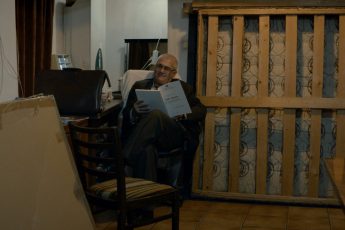
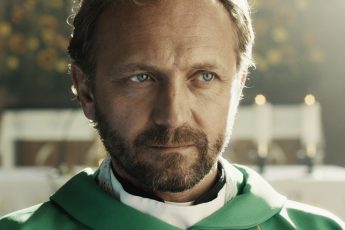
Leave a Comment